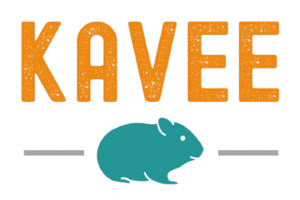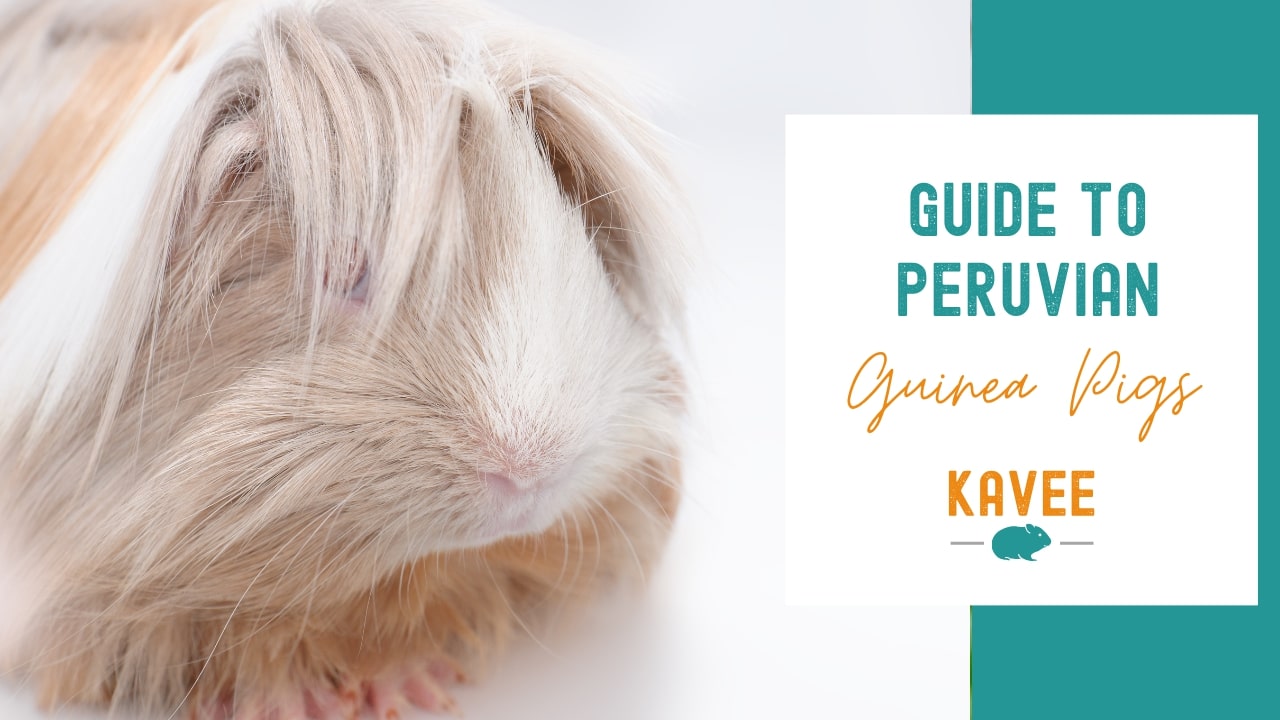With their tumbling tresses, parents of Peruvian piggies are likely to find themselves asking questions like 'Why is my guinea pig having a better hair day than me?' or 'What’s the secret to your hair care routine?'
Affectionately nicknamed the "hippies" of the guinea pig community due to their seriously long locks, these fabulous floofers have a sweet-natured temperament that makes them impossible not to love.
One look and you’re probably already on your way to bringing one of them home. However, as a responsible piggy parent: a word of caution. This is a breed that requires a whole lot more TLC than their short-haired cavy friends (like the fuss-free American guinea pig, for example).
And with an appearance like this to keep up, is it any wonder that your Peruvian princess demands to be treated as such? From bathing routines to intense grooming, this is one high-maintenance diva. That’s why we wouldn't recommend a long-haired breed as a first-time piggy pet.
If you're still mulling over whether this is the perfect furry friend for you, then let's get to know Peruvian guineas a little bit better. Read on for your complete guide to the hippie pig!

The Origins of the Peruvian Guinea Pig (PGP)
One of the oldest breeds recorded, the Peruvian guinea pig has a Latino ancestry and originates from South American countries. Our exotic piggy pal is widely believed to have been a native of places like Bolivia, Argentina, and Peru (hence the Peruvian namesake).
However, in South America, people didn't traditionally view piggies as a popular pet (how could they?!). Hoomans only began to raise their furry families in the 16th century when Peruvian guineas bravely crossed the ocean, with French European traders shipping them from Peru to France.
Peruvian piggies became more widely known and accepted when they traveled one stop further to the United Kingdom from France. From here, they gained more adoring fans and reached international stardom.
Now, they’re recognized by both the American Cavy Breeders Association and the British Cavy Council as a certified cavy breed. Hurrah!
What do Peruvian guinea pigs look like?
A Peruvian guinea pig looks just as much like a furry potato as other breeds. What really makes these piggies stand out from the crowd are their Rapunzel-esque locks. There isn't another cavy breed on the planet that sports a coat so long. Measuring up to 14 inches, the Peruvians’ hair regularly grows to the point where it brushes the floor. For some show Peruvians, it may grow even longer - a pawesome achievement!
Rocking an on-trend middle parting and balayage coloring, these piggies are also identifiable by their striking hair swirls (otherwise known as 'rosettes'). With so much hair, you'd be forgiven for wondering if they’re actually able to see where they’re going. Fortunately, well-styled bangs mean these cavies not only look fantastic but maintain practicality too.
As with most breeds, the Peruvian long-haired guinea pig boasts numerous gorgeous color combinations. That said, you’ll most commonly come across the 'self' and bi-colored varieties. If you're looking for an unbeleafable piggy, then search for a tri-colored Peruvian - a rare find with an even silkier coat.
Weighing the same as a small bag of sugar, the Peruvian guinea pig tips the scales anywhere between 1 to 3 pounds, with males at the upper end. They also have a much smaller head than most other cavy breeds but don’t believe this makes them any less smart, though!
Typically, you can expect your Peruvian cavy to grow anywhere between 10 to 14 inches long. However, their long silky hair and larger-than-life personality can make them appear even bigger!

How to groom a Peruvian guinea pig
While you may be able to get away with a daily spot check and a weekly cage clean for many guinea pig breeds, these little divas require a whole lot of TLC!
Due to their long fur, Peruvian cavies demand daily grooming as well as regular bathtimes and hair appointments. After all, looking this good is a full-time job for your Insta-worthy floofer!
Firstly, keep their luscious locks free from hay, paper, or wood shavings that can easily get them tangled and matted with a fleece cage liner. You can choose one that's snuggly and durable here.
Next, you'll want to establish a grooming routine that meets a Peruvian's somewhat particular needs. Read on to find out what you're getting yourself into on a daily, monthly, and quarterly basis.
Hair Brushing (Daily)
There's no doubt you'll want to keep your cavy’s coat like it’s straight out of a hair salon. But it's important to note that grooming isn’t just a treat for the Instagrammable floofers and that there are serious health implications if you don't keep up with it.
A guinea pig’s matted fur can cause painful irritation and even lead to nasty skin infections. A warning sign of a hair mat is the loss of free range of motion in your poor piggie's legs.
Unlike other breeds, the Peruvians are sadly unable to groom themselves, so they are completely dependent on their piggy parents to look after them properly! As such, regular brushing is a must in your cavy's haircare routine. To make things a little easier, we've listed the simple steps you'll need to follow below:
- Using a soft brush or fine toothcomb, work through the long strands of hair from the base to the ends. Top tip: make sure to brush in the direction of hair growth, usually from a middle parting down the back.
- As you brush your floofer, check for matted sections and tease these out by hand. Or, if needed, carefully cut them off with shears.
- Repeat this grooming routine at least twice a week, or more regularly if required.
Understandably, your Peruvian cavy may be more than a little nervous the first time you sit down for a full-on grooming session. So one of the best things you can do is to introduce brushing as a safe and calming activity already when they’re babies.
Expect some fidgeting the first few times, but after a while, this can hopefully become a relaxing bonding experience for the both of you!
Hair Cutting (Monthly)
When your Peruvian long-haired guinea pig starts to trip over their own locks, it's a sure sign it's time for a haircut! As soon as their hair grows past the feet and skims the ground, you'll want to follow the below guide:
- Keep lots of tasty treats on hand. Some sliced carrots should keep your worried piggy entertained while they get their haircut.
- Hold a single lock of hair between your second and third fingers (this is to avoid cutting too close to the skin).
- Trim the ends off and repeat until your cavy's hair is at an even length all over.
- Take your time and never cut your Peruvian's hair if you're in a rush. If you cut too close to the skin, you may accidentally nick it. We definitely don't want that!
Fun fact: Peruvian breeders often style their guinea pig's hair with tissue paper and rubber bands. This keeps their silky tresses intact for longer! Oh, and it looks pretty fabulous too.

Bathing (Every 3 Months)
With their salon-worthy coats, Peruvians need a soak in the tub more often than other guinea pig breeds.
Due to their impressive length, it's easy for their coats to get dirty. Long hair means poop, urine, and food scraps naturally get caught up in it, which isn't very hygienic for your furry little friend. Beware in particular of soiled bedding, which can lead to critters that lay eggs and cause flystrike (a fatal illness if left untreated).
Bathing your piggy is therefore an activity that you won't want to skip. Like brushing, it's best to introduce your cavy to water when they’re babies to get them used to bathtime. By making this part of their routine from a young age, it’ll be easier for them to associate pamper sessions with a relaxing and enjoyable bonding moment between the two of you.
For a more in-depth guide on caring for long-haired breeds, have a read here.
Is the Peruvian guinea pig right for you?
By now, you’re likely to have already fallen head over heels for Peruvian pigs. Their curious, affectionate nature combined with their fabulous super-floofy locks makes it hard not to.
But before you go ahead and bring a Peruvian furry friend home with you, take a moment to reflect and ask yourself a few important questions:
- This is a high-maintenance guinea pig breed - do you have the necessary time and commitment to properly care for these precious, attention-seeking little furballs?
- Are you in it for the long haul? These floofs call for extra time and energy with their strict grooming regimen. No hair can be left out of place!
- Do you have the relevant experience to ensure your cavy gets the best care possible? If you're a first-time piggy parent, then this is going to be a steep learning curve for you. You’re most likely better off with a lower-maintenance breed.
New piggy parents might find it easier to start their furry family with short-haired guinea pigs since they require less frequent grooming and cage cleaning. Crucially, this breed makes it easier to detect any health issues since they aren’t hiding underneath a voluminous hairdo.
Ultimately, only you will know if a Peruvian guinea pig is suitable for you and your lifestyle. If the above points have only made you more certain that this is the cavy for you, then we're sure they'll make an excellent furry addition to your growing family!

Peruvian Guinea Pigs FAKs - Frequently Asked Kavees
How long do Peruvian guinea pigs live?
The lifespan of a Peruvian guinea pig varies, but typically they can live anywhere from 4 years up to the ripe old age of 6.
Do Peruvian guinea pigs need haircuts?
Yes! With hair that is constantly growing, Peruvian coats can get very long (typically anywhere up to 10-14 inches). While you don't need to be a qualified barber, you will need some basic tools to give your pig a regular trim.
Do Peruvian guinea pigs have health issues?
To reduce the risk of long-term health problems, make sure your Peruvian cavy receives the same care required of all breeds: high-quality pellets, plentiful fresh hay, and some tasty snacks loaded with Vitamin C. On top of this, to benefit their silky locks, you'll want to ensure they consume enough Omega-3 fatty acids.
Conclusion
Supermodels of the piggy world, these fluffy rodents will be sure to attract the attention of your friends and family. They make for lovely and affectionate pets, although they're a bit harder to come by in typical large pet stores!
If this is your first foray into guinea pig parenthood or you've got a demanding schedule, then consider carefully whether this is the best cavy for you. It's important to make sure you can give this super-cute and cheeky ball of fluff all the love and attention it deserves (and more!).







